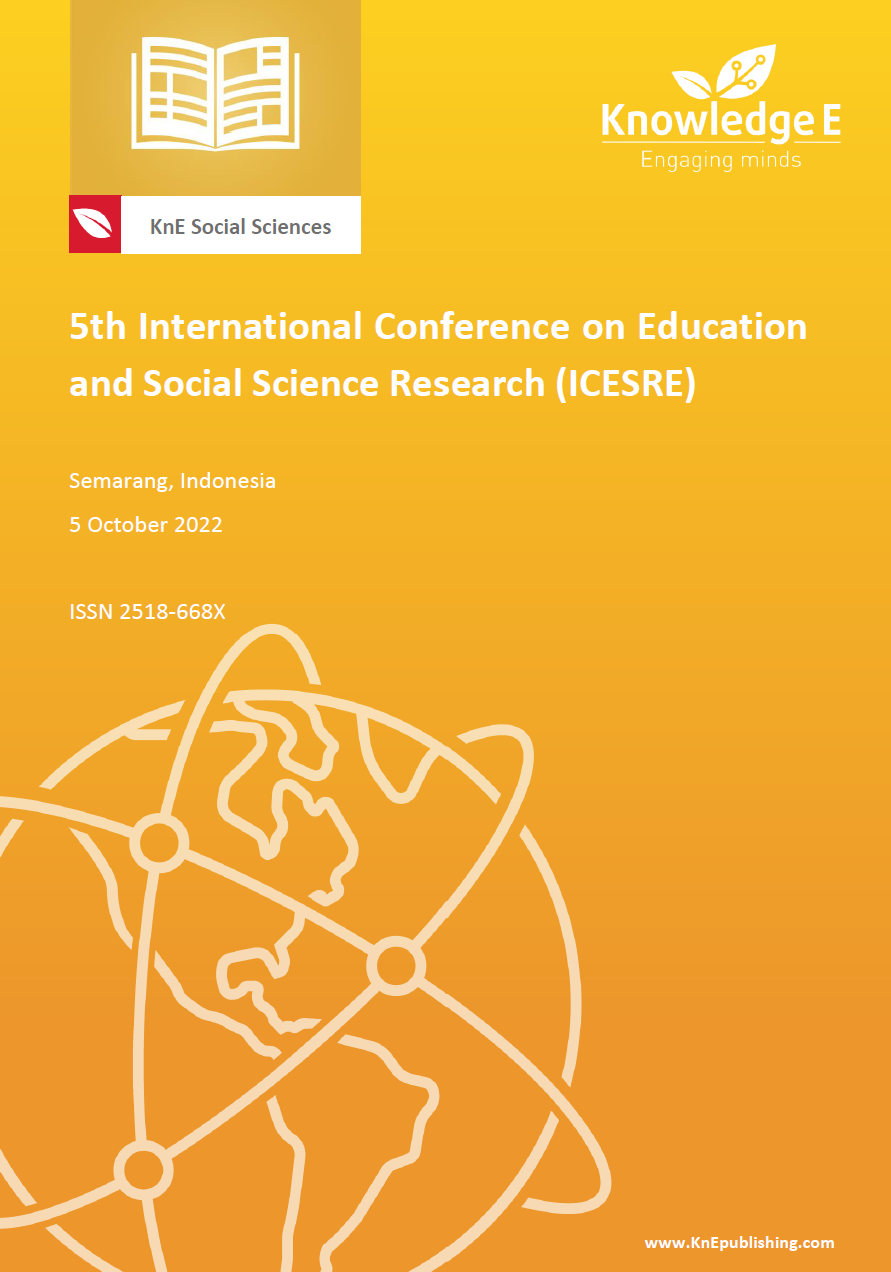Creating A Competitive Advantage For Universities Through Knowledge-Based Strategic Assets Management
DOI:
https://doi.org/10.18502/kss.v7i19.12443Abstract
This study aims to identify and analyze strategic assets for universities and explain the role of leadership in maximizing the use of these assets as a competitive advantage through knowledge management practices. As a non-profit organization, universities live in a competitive world of higher education services. Theoretical and practical studies prove that intense competition will be won by organizations that have a sustainable level of competitive advantage, not temporary competitive advantages. In order to identify strategic assets for higher education institutions, this study assumes that all knowledge-based assets are strategic assets that add value to the organization and improve organizational performance. The role of higher education as a knowledge-based organization that nurtures diverse knowledge and as a producer of reliable human resources in the scientific field establishes knowledge-based assets or intellectual capital as the strategic capital of universities. The research population are the leaders of universities in East Java, both state universities and private universities. The sample was determined based on the purposive random sampling technique, namely by selecting the leaders of universities with a rating (AIPT) of at least B or Good, totalling 113 people. The criteria are set with the assumption that the university leadership has implemented knowledge management. Data were collected by distributing questionnaires and analyzed using SEM-PLS. Research is useful both theoretically and practically. At the theoretical level, a strategy for managing intellectual capital is formulated as a strategic asset, while at the practical level it can be carried out by university leaders.
Keywords: Intellectual Capital, Knowledge Management, AIPT, Competitive Advantage
References
[2] Haan HH de. Competitive advantage, what does it really mean in the context of public higher education institutions? International Journal of Educational Management. 2015;29:44–61.
[3] Sizer J. Research and the knowledge age. Tertiary Education and Management. 2001;7:227–242.
[4] Adams CA. Sustainability reporting and performance management in universities Challenges and benefit. Sustainability Accounting, Management and Policy Journal. 2013;4:384–392.
[5] Bontis N, Dragonetti NN, Jacobsen K, Ross G. The Knowledge toolbox: Manage intangible available to measure and a review of the tools resources. European Management Journal. 1999;17:391–402.
[6] Dumay J, Guthrie J. IC and strategy as practice. International Journal of Knowledge and Systems Science. 2012;3:28–37.
[7] Coleman S. The role of human and financial capital in the profitability and growth of women-owned small firms. Journal of Small Business Managemen. 2007;45:303– 319.
[8] Fatoki O. The impact of human, social and financial capital on the performance of small and medium-sized enterprises (SMEs) in South Africa. The Social Science Journal. 2011;29:193–204.
[9] Todericiu R, Şerban A. Intellectual capital and its relationship with universities. Procedia Economics and Finance. 2015;27:713–717.
[10] Nawaz T, Haniffa R. Determinants of financial performance of Islamic banks: An intellectual capital perspective. Journal of Islamic Accounting and Business Research. 2017;8:130–142.
[11] Dutot V, Galvez EL, Versailles DW. CSR communications strategies through social media and influence on e-reputation: An exploratory study. Management Decision. 2016;54:363–389.
[12] Bakshi HCP. International Journal of Bank Marketing Examining intellectual capital and competitive advantage relationship: role of innovation and organizational learning [Internet]. Marketing Intelligence & Planning. 2015;33:8–10.
[13] Mehralian G, Rasekh HR, Akhavan P, Sadeh MR. An empirical investigation of the impact of intellectual capital on firms ’ market value and financial performance: Evidence from Iranian companies. International Journal of Management and Business Research. 2012;2:1–12.
[14] Cavicchi C, Vagnoni E. Does intellectual capital promote the shift of healthcare organizations towards sustainable development? Evidence from Italy. Journal of Cleaner Production. 2017;153:275–286.
[15] Massaro M, Dumay J, Garlatti A, Dal Mas F. Practitioners’ views on intellectual capital and sustainability: From a performance-based to a worth-based perspective. Journal of Intellectual Capital. 2018;19:367–386.
[16] Sternberg RJ. Managerial intelligence: Why IQ isn’t enough. Journal of Management. 1997;23:475–493.
[17] Wiig KM. Integrating intellectual capital and knowledge management. Long Range Planning. 1997;30.
[18] Tung KY. Memahami knowledge management. Jakarta: Penerbit Indeks; 2018.
[19] Zhou AZ, Fink D. The intellectual capital web: A systematic linking of intellectual capital and knowledge management. Journal of Intellectual Capital. 2003;4:34–48.
[20] Earl M. KM strategy taxonomy. Journal of Management Information Systems. 2001;18:215–233.
[21] Teodorescu D. Institutional researchers as knowledge managers in universities: Envisioning new roles for the IR profession. Tertiary Education and Management. 2006;12:75–88.
[22] Secundo G, Elena-Perez S, Martinaitis Ž, Leitner K-H. An intellectual capital maturity model (ICMM) to improve strategic management in European universities: A dynamic approach. Journal of Intellectual Capital. 2015;16:419–442.
[23] Sekuloska JD. Higher education and training as crucial pillars in creating the competitiveness of nation. Procedia Social and Behavioral Sciences. 2014;156:241– 246.

